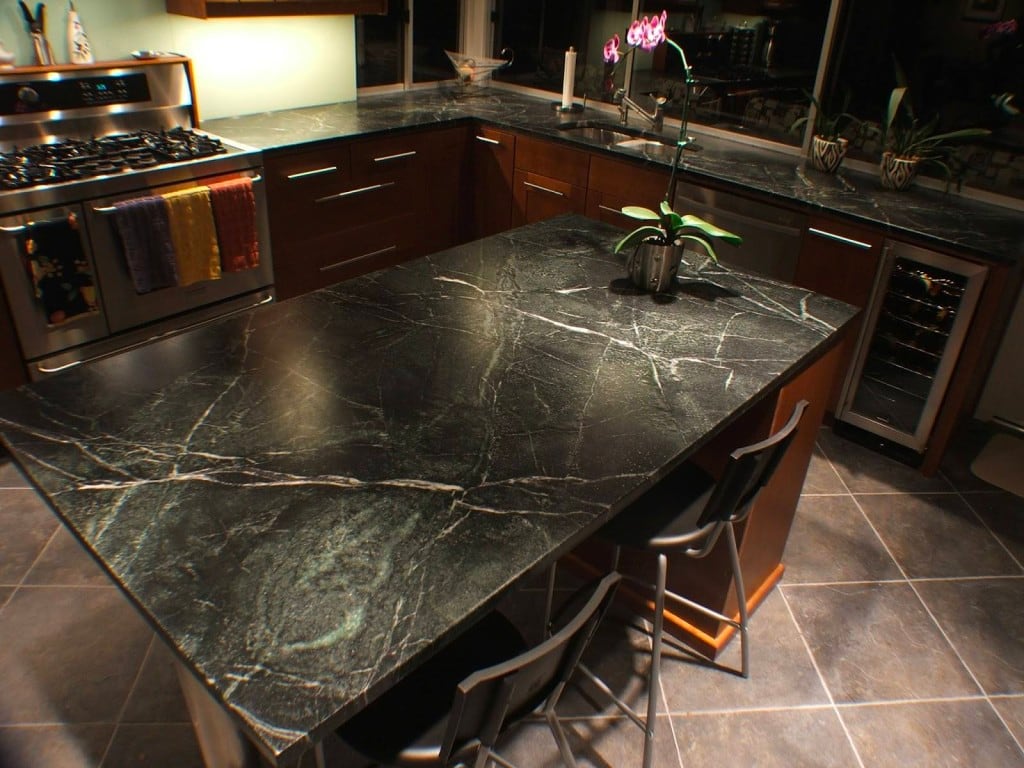Soapstone is the common name for the naturally occurring stone known as steatite, a magnesium-rich metamorphic rock containing a high percentage of talc—the same substance found in baby powder. The softer varieties, often called artistic soapstone, actually have a silky, soapy feel to them, and may contain as much as 80 percent talc. Because soapstone is used for carving, many people wrongly imagine that the stone is far too soft for a countertop.
However, the type of stone used in fireplaces and countertops is architectural soapstone, which is only about 30 percent talc, making it quite hard and perfectly suitable for being cut into slabs. Many people are surprised to learn that soapstone, while somewhat softer than granite, is less porous and susceptible to staining, and is harder than marble.
Soapstone slabs are usually in creamy shades ranging from nearly white to dark gray, with subtle veining. It is less dramatic than most types of granite, but many people prefer its subtle beauty to the loud exuberance of granite.

